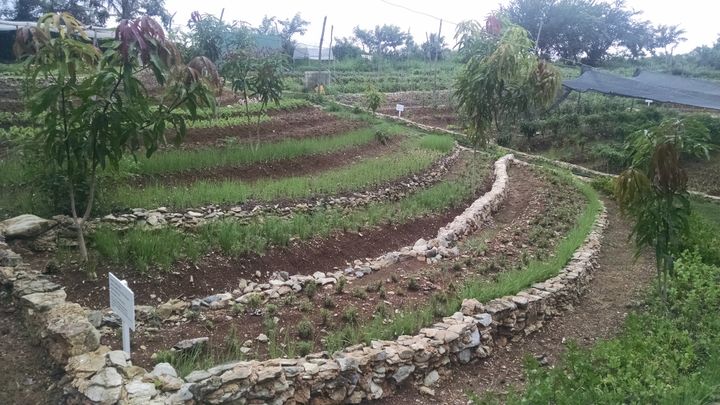
Organic farm in Cuba
The seas are rising, droughts are spreading, and storms are becoming more violent. Many people in the world are already feeling the disastrous effects of climate change—especially farmers.
Farming is a special climate case because not only do crops suffer under erratically changing weather patterns, but agriculture—at least the high-input, fossil fuel and chemical-based agriculture that is being touted as the solution to world hunger—is one of the major sources of greenhouse gases (GHG) that drive global warming.
Can we feed the world without destroying it? The answer is a definite “yes!” Climate change impacts hunger, but this doesn’t mean hunger or global warming are inevitable. But we will have to change the way we grow and consume our food.
The good news is we already have the methods to both feed and cool the planet: agroecology. The problem is, the agrifoods industry—and our political leaders—want to keep business as usual.
The global food system accounts for up to one-third of today’s global greenhouse gas (GHG) emissions. From synthetic fertilizer application to transport and storage, our industrial agriculture system is dependent on fossil fuels. Methane emissions directly from animals, synthetic inputs, and large-scale deforestation and land degradation have proven to be a disastrous environmental cocktail.
Livestock alone now produce more GHGs than all global transportation combined. Eighty percent of the livestock industry’s expansion comes from industrial-scale factory farms. This large-scale growth is driven by corporate consolidation around the world. Monsanto and Bayer are expecting a rubber stamp for from the Trump administration for the biggest agribusiness merger in history that will give them a third of the global seed market and a quarter of the global pesticide market. ChemChina and Syngenta’s proposed merger follows, and Dow and Dupont are following suit.
But these agribusiness behemoths are not proposing solutions that address climate change. Instead, from seed to plate, the agriculture system is preparing for increasing intensification, consolidation, and technical upsizing – ultimately requiring increased dependence on fossil fuels and other carbon-intensive technologies.
And these developments hurt farmers, too. As farmers’ profit margins are eaten by the cost of corporate technological developments such as big data, nanotechnology and synthetic biology, farms need to get bigger and bigger just to survive. Ultimately, farmers are substituted by “more efficient” technologies that further tie us to a fossil fuel-based agricultural economy.
But it doesn’t have to be this way.
Agroecology offers us transformative solutions to hunger and climate change by combining traditional knowledge with today’s cutting-edge science for sustainable agriculture. Agroecological practices not only increase food security via the production of food for local markets, they also preserve cultural heritage and community well-being by ensuring dignified livelihoods, helping to keep family farmers on the land. Further, agroecological practices increase resiliency to climate change by replenishing local resources such as soil fertility, water tables, species biodiversity, and carbon capture. Agroecology isn’t just a technical practice, it’s an agricultural science and a social movement to transform the food system.
Our food and agriculture system is a vessel of profound social and political power, and the implications of this are serious. That’s why industrial agriculture giants such as Monsanto and Bayer are amping up their fight for control over our food. Whether it’s direct manipulation and patenting of DNA or technology enabling digital tracking of cultivars by satellite, industry is reaching to maintain power over our food system, energy economy—and finally, the ways in which our social and political systems are organized.
But that’s also why peasants, farmers, farmworkers, and consumers around the world are using agroecology as a strategy to rebuild local food security, biodiversity, community, and political power.
We can feed the world without destroying it; the question is, will we?
Written with Food First Publications & Communications Director Ahna Kruzic, who attended the People’s Climate March in Washington, D.C.
